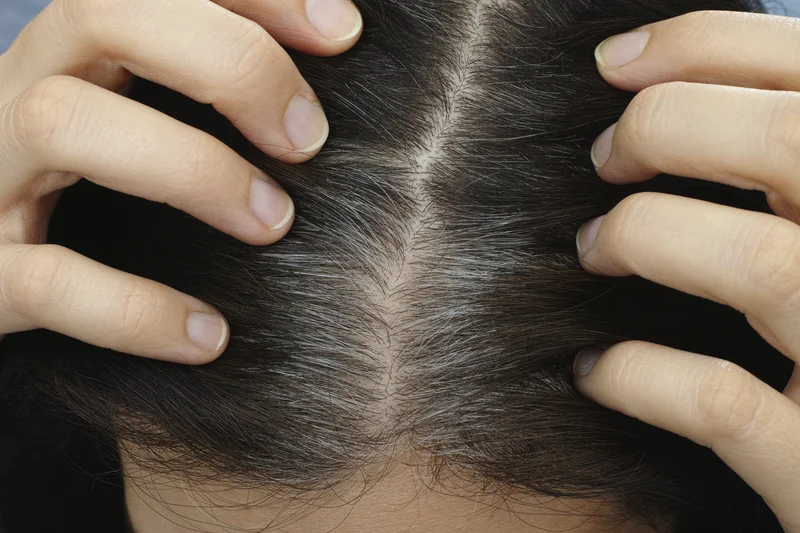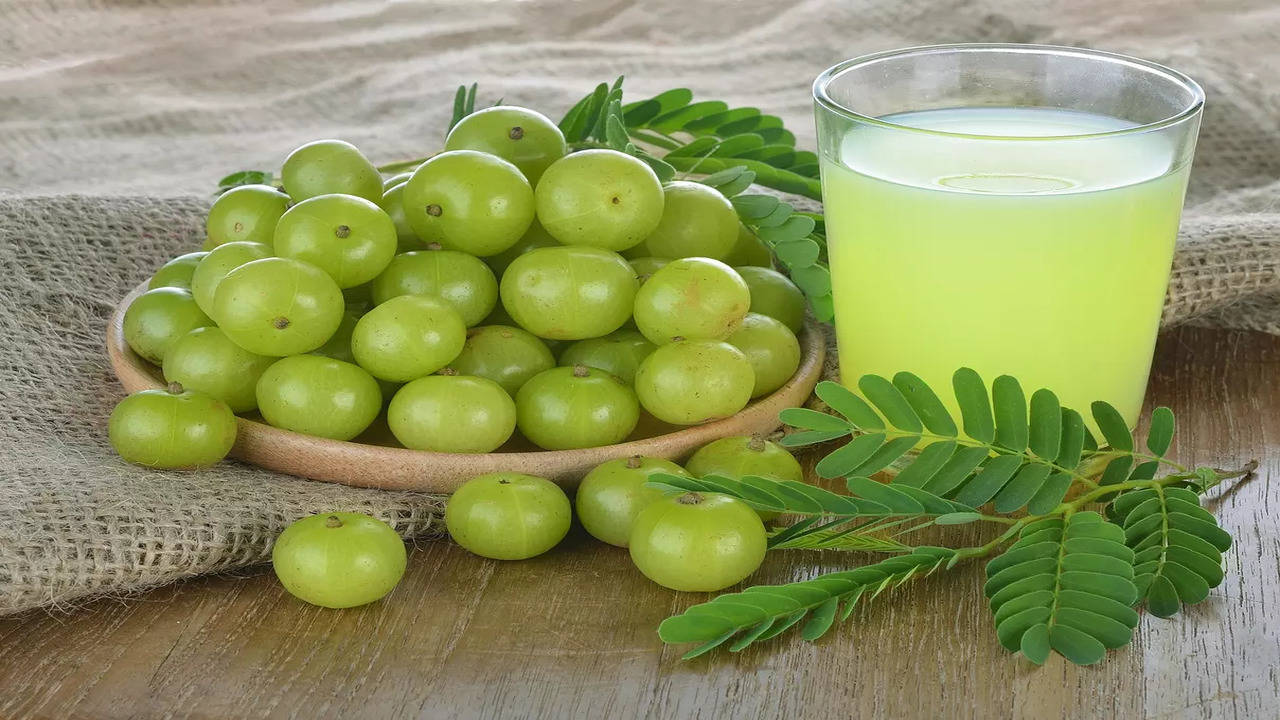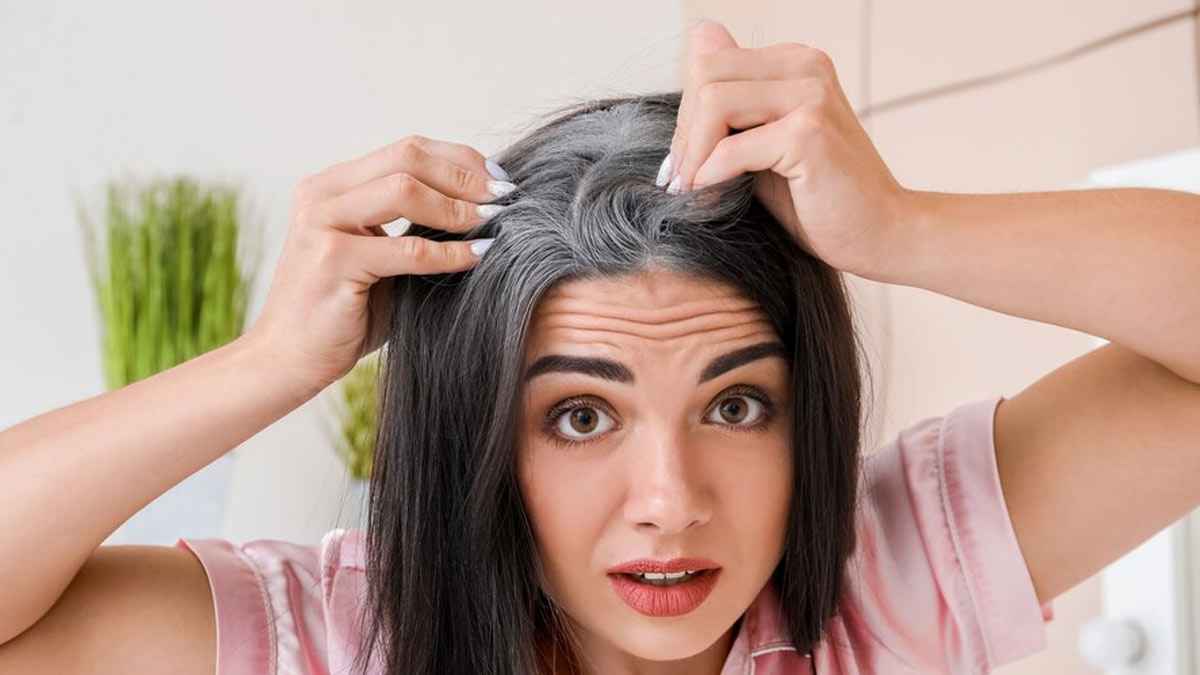Shop Now in Our Store
Palitya – Ayurvedic Perspective on Premature Graying of Hair

Introduction to Palitya
Palitya refers to premature graying of hair, a condition where hair loses its natural color and smoothness before the age of 35. In Ayurveda, this phenomenon is attributed to an imbalance in the body’s doshas and a gradual reduction in melanin production, the pigment responsible for hair color. By understanding and addressing palitya through Ayurvedic principles, one can work towards restoring hair vitality and delaying further graying.
Historical Roots & Ayurvedic Significance
In ancient Ayurvedic texts, palitya is acknowledged as an early sign of aging and doshic imbalance. The premature loss of hair pigment is believed to stem from an imbalance in Vata and Pitta doshas, which disrupt the natural process of melanin production in hair follicles. Ayurvedic practitioners have long recommended holistic treatments—encompassing diet, herbal remedies, and lifestyle modifications—to manage palitya and promote overall hair health.
Key Components & Therapeutic Benefits
1. Ayurvedic Herbal Formulations
Ayurvedic remedies for palitya focus on enhancing melanin production and nourishing the hair follicles. Common herbal ingredients include:
- Bhringraj (Eclipta alba): Known as the “king of herbs” for hair, it promotes pigmentation and strengthens hair roots.
- Amla (Phyllanthus emblica): Rich in antioxidants, it helps rejuvenate hair and prevent oxidative stress.
- Ashwagandha (Withania somnifera): Supports hormonal balance and reduces stress, a major contributor to premature graying.
- Brahmi (Bacopa monnieri): Enhances blood circulation to the scalp, ensuring better nourishment for hair follicles.
- Shankhapushpi (Convolvulus pluricaulis): Known for its rejuvenating properties, it helps in restoring hair color and texture.
2. Dosha Balancing & Nutritional Support
Palitya is often linked to an imbalance in the body’s doshas. Ayurveda emphasizes balancing Vata and Pitta through a tailored diet and lifestyle adjustments. Foods rich in antioxidants, vitamins, and minerals help combat oxidative stress and support melanin synthesis, while detoxifying the body to promote overall health.
3. Stress Management & Lifestyle Modifications
Stress is a significant factor contributing to palitya. Ayurvedic practices such as yoga, meditation, and regular scalp massages with herbal oils not only alleviate stress but also improve blood circulation, encouraging healthy hair growth and pigmentation.
4. Integration with Ayurvedic Therapies
For comprehensive management of palitya, Ayurvedic therapies are often integrated, including:
- Abhyanga (Ayurvedic Oil Massage): Enhances scalp circulation and nourishes hair follicles.
- Shirodhara: A calming therapy that balances the mind and body, reducing stress-induced graying.
- Panchakarma: A detoxification process that removes accumulated toxins, paving the way for rejuvenated hair health.
How Palitya is Addressed: The Science Behind the Treatment
The Ayurvedic approach to palitya involves stimulating melanin production and countering oxidative stress. The bioactive compounds in herbs like Bhringraj and Amla help in neutralizing free radicals, thus preserving the natural color of the hair. These herbs, combined with holistic therapies, work synergistically to restore the balance of Vata and Pittadoshas, which is essential for optimal hair follicle function and pigment retention.
Guidelines for Choosing the Right Treatment
When considering treatments for palitya, keep the following recommendations in mind:
- Consult a Qualified Ayurvedic Practitioner: Tailored treatment plans ensure that remedies address your specific doshic imbalances and hair health needs.
- Source Authentic Herbal Products: Use formulations made from high-quality, organic herbs to maximize benefits.
- Adopt a Balanced Diet: Incorporate antioxidant-rich foods, fresh fruits, and vegetables to support melanin production and overall hair vitality.
- Embrace a Holistic Lifestyle: Regular exercise, stress management, and Ayurvedic therapies can significantly enhance treatment outcomes.
Recommended Dosage & Usage
The administration of Ayurvedic treatments for palitya should be personalized based on individual health conditions. Typically:
- Dosage: Herbal formulations are taken as directed by an Ayurvedic practitioner, often in the form of decoctions, powders, or oil treatments.
- Method: These remedies may be applied topically or consumed orally, depending on the formulation.
- Enhancing Effectiveness: Complementary practices such as scalp massage with herbal oils can improve absorption and efficacy.
- Professional Guidance: Always follow the recommendations provided by a certified Ayurvedic expert to ensure safe and effective treatment.
Potential Side Effects & Precautions
While Ayurvedic treatments for palitya are generally safe when administered correctly, it is important to observe the following precautions:
- Individual Sensitivities: Some individuals may experience mild digestive or allergic reactions to specific herbs.
- Pregnancy & Nursing: Pregnant or nursing women should consult a qualified practitioner before starting any new treatment.
- Consistency: Natural treatments require consistent use over time to observe noticeable improvements.
- Monitor Progress: Regular check-ins with an Ayurvedic practitioner are advised to adjust the regimen as needed.
Frequently Asked Questions
How does Ayurveda treat Palitya?
Ayurveda treats palitya by balancing the body’s doshas, enhancing melanin production, and reducing oxidative stress through herbal formulations, dietary changes, and holistic therapies.
What are the key herbs for managing Palitya?
Essential herbs include Bhringraj, Amla, Ashwagandha, Brahmi, and Shankhapushpi. These herbs work together to support hair pigmentation and overall hair health.
Can lifestyle changes help prevent premature graying?
Yes, integrating stress management practices, a balanced diet, and regular Ayurvedic therapies such as Abhyanga and Shirodhara can help mitigate the effects of palitya.
Is Ayurvedic treatment for Palitya effective for everyone?
The effectiveness of Ayurvedic treatment depends on individual doshic imbalances and overall health. Personalized treatment plans from a qualified practitioner are recommended for best results.
How long does it take to see improvements in hair color?
Improvements in hair pigmentation may vary. Some individuals might notice changes within a few months, while others may require a longer duration of consistent treatment.
Are there any dietary recommendations for managing Palitya?
A diet rich in antioxidants, vitamins, and minerals—found in fresh fruits, vegetables, and whole grains—is recommended to support melanin production and combat oxidative stress.
Where can I find authentic Ayurvedic remedies for Palitya?
Authentic remedies can be sourced from reputable Ayurvedic pharmacies and certified practitioners. Ensure the products are organic and high-quality for optimal results.
Conclusion & Expert Insights
Palitya is a condition that reflects premature graying of hair due to reduced melanin production and doshic imbalance. The Ayurvedic approach offers a holistic solution by incorporating herbal formulations, dietary adjustments, and stress management practices. By consulting with experienced Ayurvedic professionals and adopting a comprehensive lifestyle strategy, individuals can effectively address palitya, restore natural hair color, and enhance overall hair health.
References
- Sharma, P.V. (1995). Ayurvedic Healing: A Comprehensive Guide.
- Lad, V. (2002). Ayurveda: The Science of Self-Healing.
- Chopra, D. (2004). Perfect Health: The Complete Mind/Body Guide.
- Dash, B. (2010). Traditional Ayurvedic Approaches to Hair Health.
- National Institute of Ayurveda. Retrieved from
This article is checked by the current qualified Dr Sujal Patil and can be considered a reliable source of information for users of the site.
Got any more questions?
Ask Ayurvedic doctor a question and get a consultation online on the problem of your concern in a free or paid mode.
More than 2,000 experienced doctors work and wait for your questions on our site and help users to solve their health problems every day.



